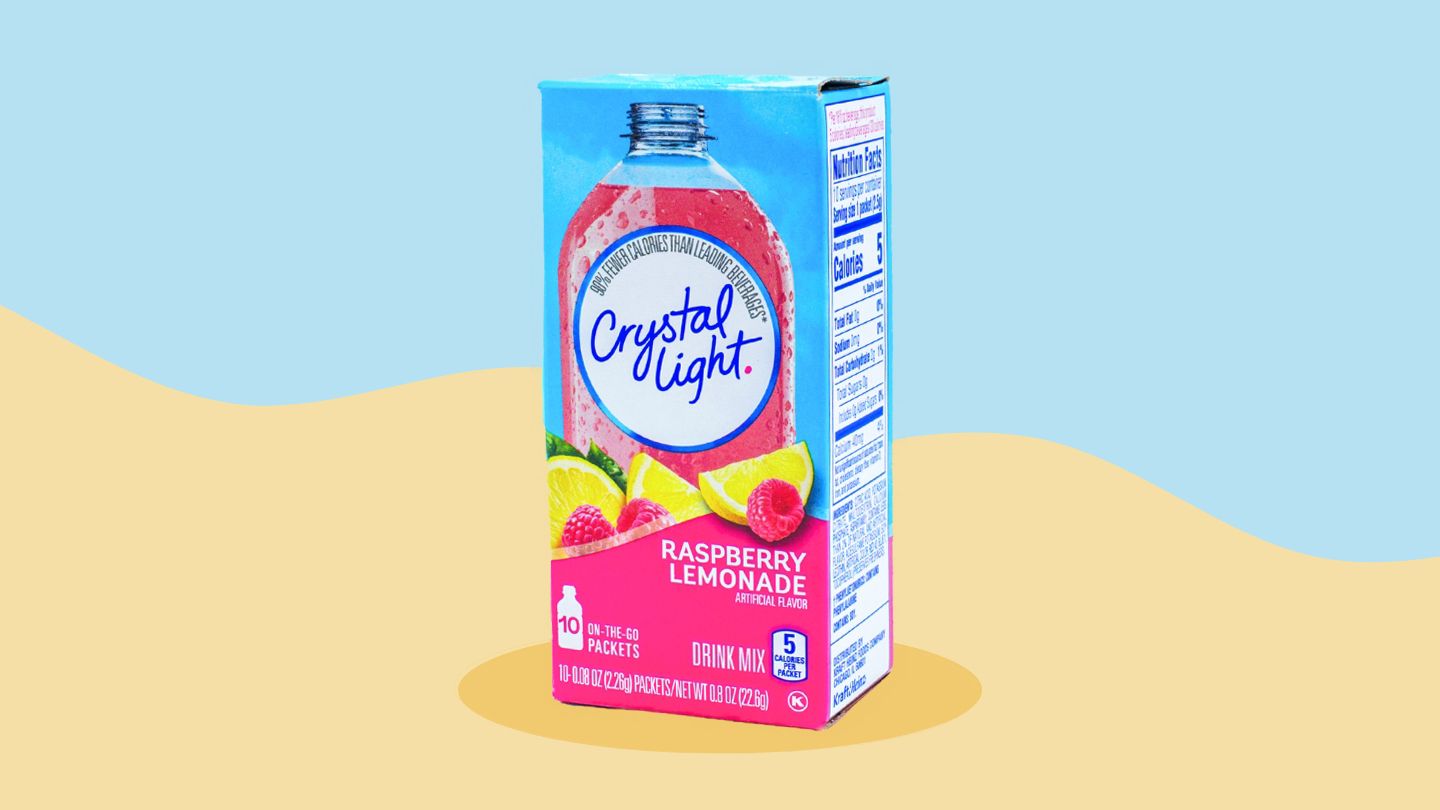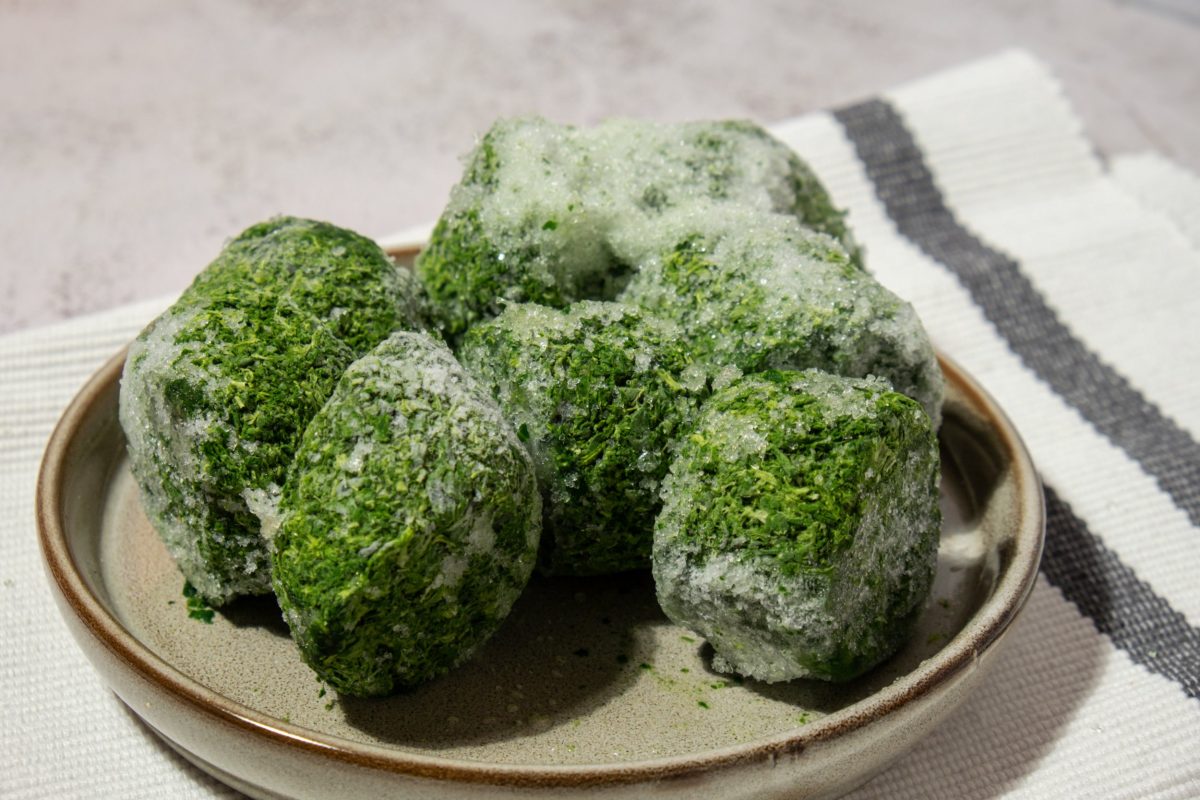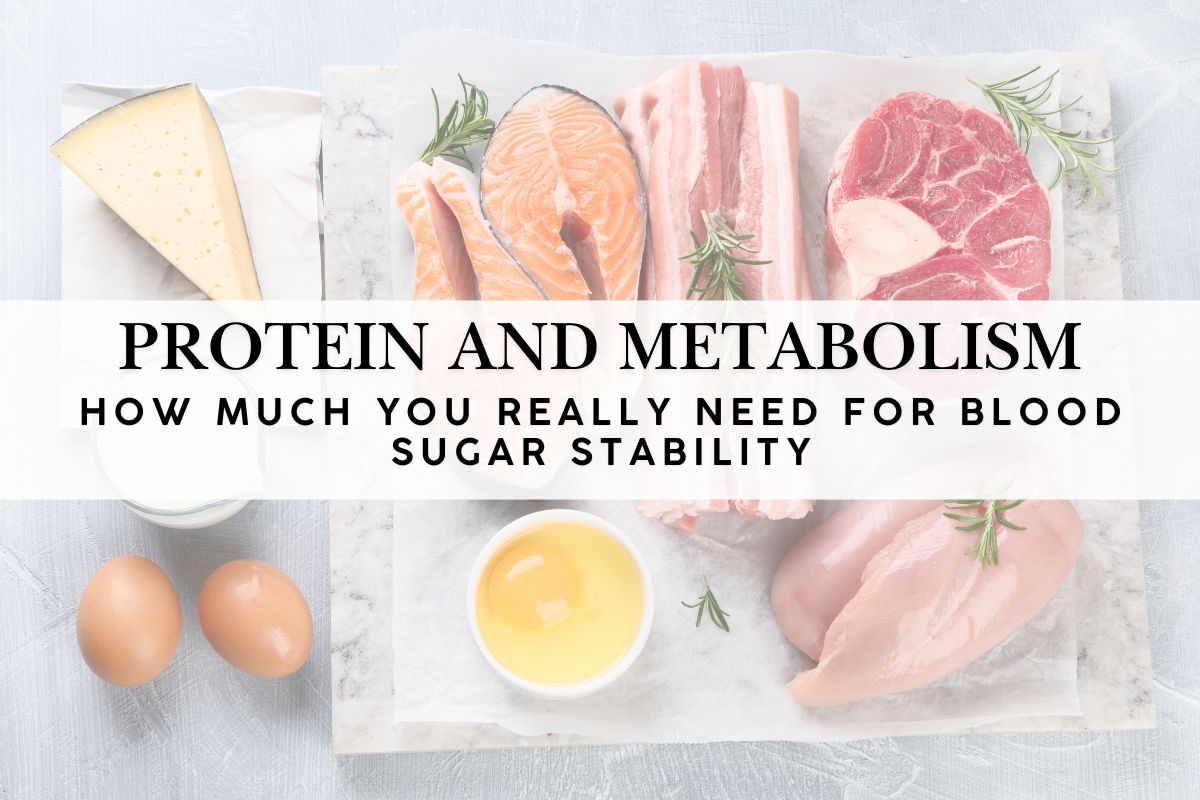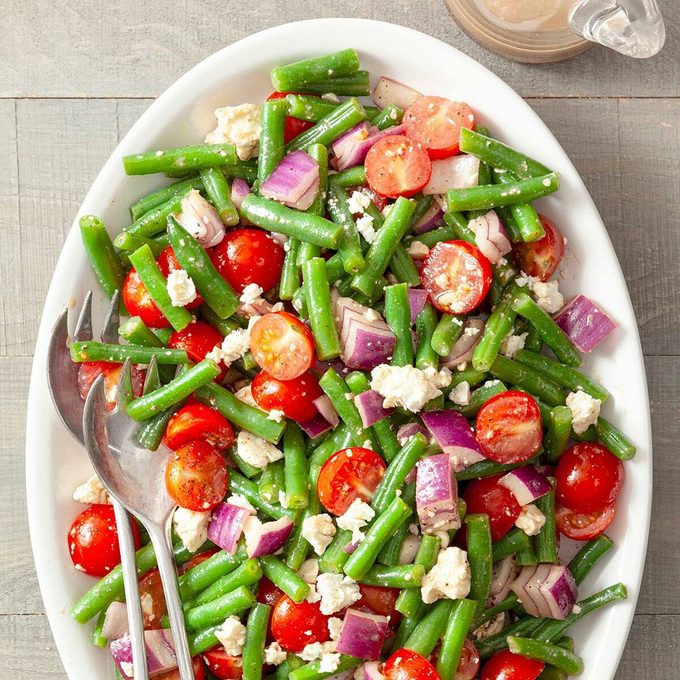Top Cat Food for Urinary Health Support
Understanding Urinary Health in Cats
Urinary problems are among the most common health issues affecting cats, and they can range from minor and uncomfortable to life-threatening. In conjunction with your veterinarian’s guidance, the right cat food for urinary health is essential. Diet plays a vital role in supporting urinary tract health by helping cats maintain a proper pH balance.
Cats can be masters of hiding their pain and discomfort, so pet parents must pay close attention to signs and symptoms of urinary issues. Symptoms include, but are not limited to, frequent urination, bloody urine, and even urination outside the litter box after the problem has lingered. Without treatment, urinary blockages may turn into medical emergencies within hours.
Whether it’s urinary crystals, stones, blockages, or a urinary tract infection, your veterinarian should correctly diagnose the issue and provide treatment. In this guide, we’ll explore urinary cat food in both traditional and prescription formulas. Whether your cat has long-standing urinary problems or you are proactively managing things, understanding available options will help you make the best choice for your feline best friend.
Cat Food for Urinary Health: What Is It?
Cat food for urinary health is more than a fancy label; it’s designed to reduce issues that cause urinary problems in cats. Mineral balance, for example, is the foundation of urinary support. You’ve probably heard of the essential elements magnesium, calcium, and phosphorus. However, high levels of them may contribute to stone and crystal formation in your cat’s urinary tract and bladder. This is where problems begin.
Moisture and hydration are the most essential factors in urinary health, and for most cats, that means proper water intake. It’s always a good idea to monitor how much water your cat drinks, but as busy pet parents, that may not always be possible. Wet foods, which generally contain 75-to-80 percent water, help dilute urine and flush the bladder. Some cat food formulas slightly increase sodium to encourage drinking, but this should be closely monitored in cats with kidney or heart conditions.
Urinary diets may also help keep your cat’s urine on the acidic side, which is about 6.0 to 6.5 on the pH scale (your veterinarian can monitor this, and you can do so with specific urine strips at home). A pH reading in this range may help dissolve struvite crystals and prevent their formation. The right pH balance comes from the right ingredients, such as cranberry support, herbal ingredients, and natural acidifiers like DL-methionine.
Pro Tip:
Food is not a cure-all or complete preventative for urinary health in cats, which is why your veterinarian should closely monitor your cat.
Vetstreet’s Top Healthy Cat Food Choices for Mineral Balance
Best Overall for Urinary Health:
Tiki Cat Solutions & Mineral Balance Adult Chicken Recipe
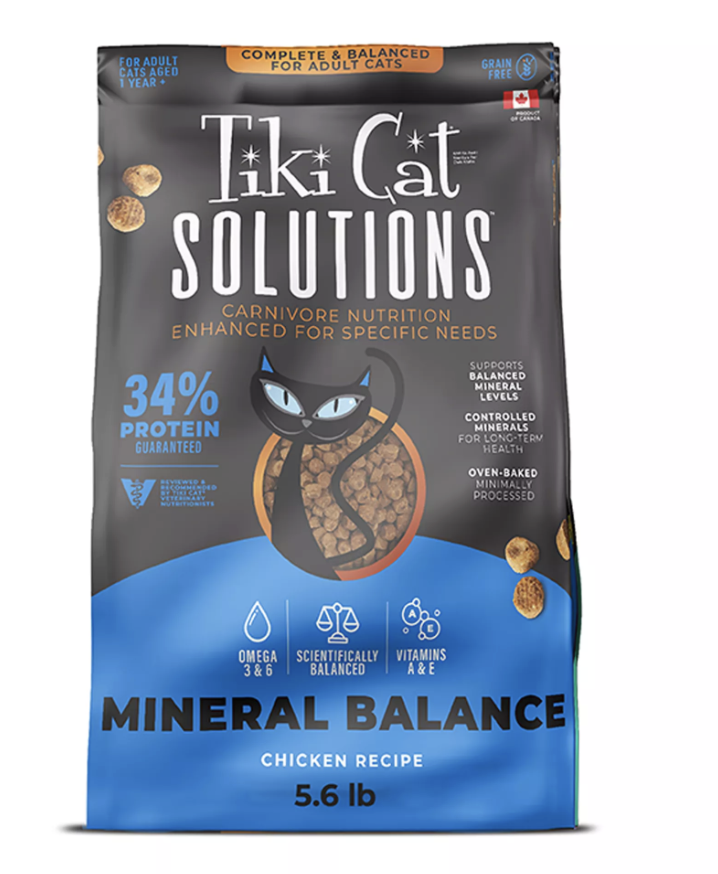
Buy at PetSmart
Key Urinary Health Features Formulated for mineral balance support, the guaranteed analysis of Tiki Cat Solutions & Mineral Balance Adult Chicken Recipe reveals a maximum magnesium level of 0.15 percent and a maximum phosphorus of 1.4 percent, both of which may help reduce crystal formation.
The high level of 34 percent crude protein helps support overall adult cat health in this grain-free recipe. Scientifically balanced with vitamins A and E, it also contains omega fatty acids to support overall feline health.
Pros The low maximum magnesium content of 0.15 percent, compared to other standard dry foods, is ideal for urinary health. The formula is grain-free and high in protein, ideal for cat moms and dads who prefer a premium cat food. The kibble formula is easy for pet parents and great for cats who enjoy dry food. Deboned chicken is packed with essential nutrients cats need. Reviewed and recommended by Tiki Cat veterinary nutritionists. Rich in omega-3s and 6s.
Cons Dry food tends to have lower moisture than canned or wet varieties, but a topper can be added for more moisture. Some of the formula’s ingredients may have a higher carb content (such as chickpeas and peas), which may be a consideration for felines with metabolic risks. The guaranteed analysis of 1.4 percent phosphorus max is moderate; check with your veterinarian to see if this percentage is acceptable. (All cats are different).
Why It Made the List We chose this formula because it boasts a strong combination of features designed for urinary health in cats. While not a prescription food, this is a higher-quality dry food with controlled minerals in a grain-free formula.
Best Wet / High-Moisture Option:
Tiki Cat Luau Succulent Chicken in Chicken Consomme
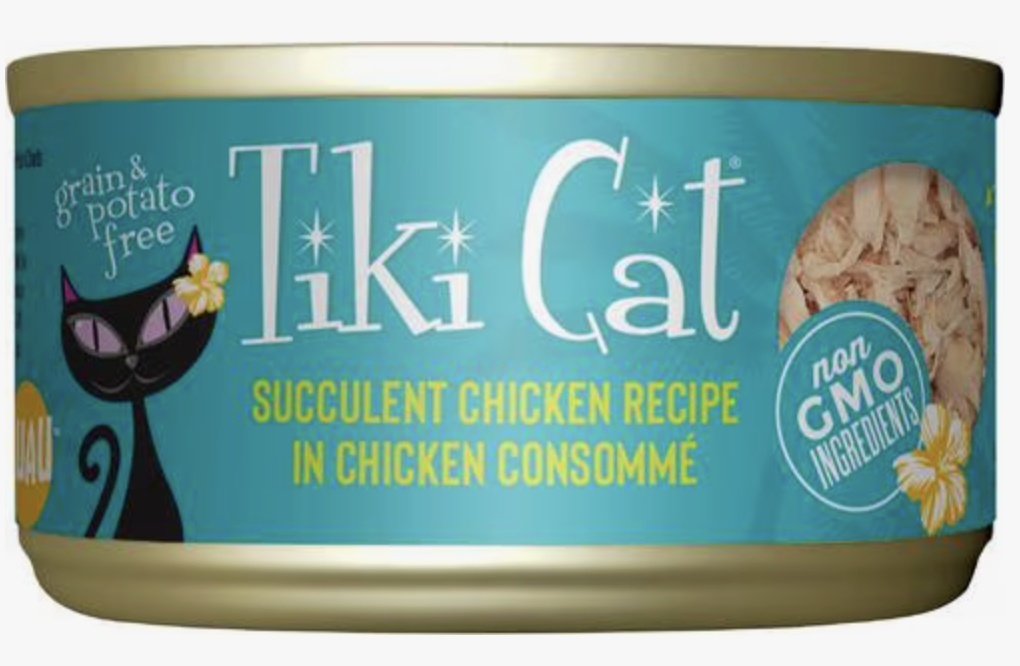
Buy at PetSmart
Key Urinary Health Features Tiki Cat’s Succulent Chicken Recipe in Chicken Consomme contains non-GMO ingredients, is grain-and-potato-free, and has 70-to-80 percent moisture to support hydration and help dilute urine, which may reduce the formation of crystals. The lower mineral levels of 0.10 percent magnesium and 1.04 percent phosphorus are ideal.
Pros The wet formula may benefit cats with urinary issues, as this helps with hydration. The shredded chicken in broth is likely to appeal to even the most finicky cat. Grain-free and potato-free formula means minimal filler ingredients. Chicken is free of hormones and antibiotics.
Cons This is not a prescription formula. Even with more moisture than dry food, cats must still drink water if they also eat dry food. Some cats may not care for the flavor if they just don’t like chicken.
Why It Made the List The Tiki Cat’s Succulent Chicken Recipe in Chicken Consomme is species appropriate, has a controlled mineral foundation, and is high in moisture. We like that it does not require a prescription and that its ingredients are transparent. Many reviews indicate cats devoured the food and really enjoyed the taste, too, which is a bonus.
Best Dry Option:
Purina ONE +Plus Urinary Tract Health Formula
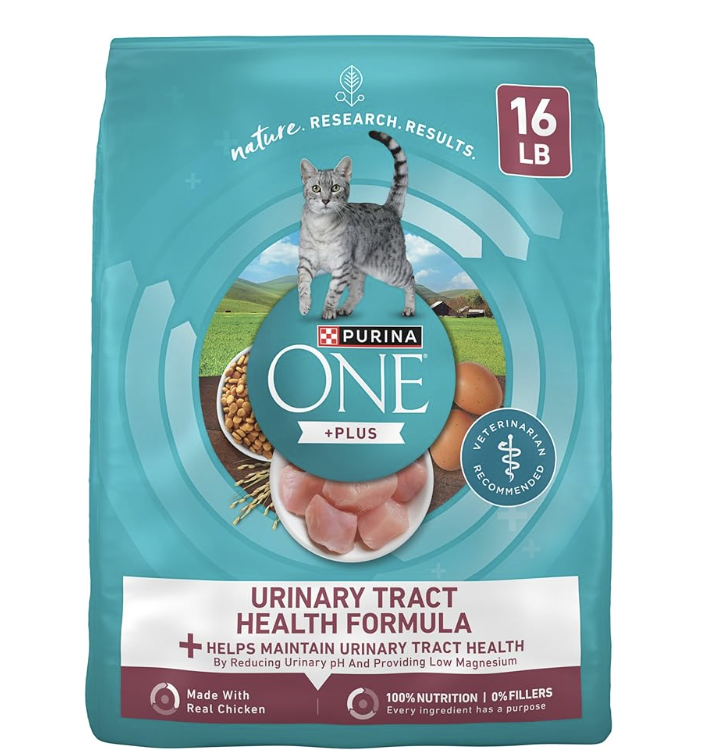
Buy at PetSmart
Key Urinary Health Features With real chicken as the first ingredient, every ingredient in the bag has a purpose. The Purina ONE +Plus Urinary Tract Health Formula is low in magnesium and may help reduce urinary pH. We like that it contains four antioxidant sources to support a strong immune system.
Pros Two important urinary health factors with lower magnesium and urine pH control. Combines urinary support and overall adult cat needs, like proper protein and immune/antioxidant support. Real chicken is ideal for most cats that enjoy it as a protein source. Veterinarian-recommended in an easy-to-serve kibble format.
Cons Like most dry foods, it has a lower moisture content than wet foods, so additional hydration is necessary. Exact mineral thresholds are not fully revealed (i.e., magnesium, phosphorus, calcium, and sodium). Contains corn protein meal, which may not appeal to some cat parents.
Why It Made the List The Purina ONE +Plus Urinary Tract Health Formula provides urinary support for cats without a hefty price tag or prescription. This is one of the few readily available dry foods for cats with urinary issues that promotes a healthy pH level while keeping magnesium levels in mind. Purina is a name that most pet parents know and trust, thanks to their extensive research in the pet food market.
Best for Picky Eaters:
BLUE Buffalo True Solutions Urinary Care Chicken Recipe

Buy at PetSmart
Key Urinary Health Features Formulated by veterinarians and animal nutritionists, BLUE Buffalo’s True Solutions Urinary Care canned food focuses on maintaining recommended urine pH levels and a controlled magnesium level in cats. The high moisture content of up to 78 percent helps promote hydration, which may help prevent urinary crystals.
Pros The wet texture is more ideal for urinary health than kibble aloe. Picky eaters may love the natural ingredients of real chicken, free of by-products. Contains no corn, soy, or wheat. No artificial flavors or preservatives.
Cons This is not a prescription diet, which may be required for some cats. There is no guarantee a finicky cat will consume this or any other food. Not highly available online, other than sources noted.
Why It Made the List This formula stands out by combining clinical urinary support with clean, natural ingredients, which is rare in the non-prescription world. The wet format promotes hydration while maintaining healthy urinary pH and mineral balance, but what sets it apart is its appeal to health-conscious pet parents seeking holistic options without sacrificing functional benefits for finicky cats.
Best Vet-Formulated / Premium Option:
Hill’s Prescription Diet c/d Multicare Stress Urinary Care
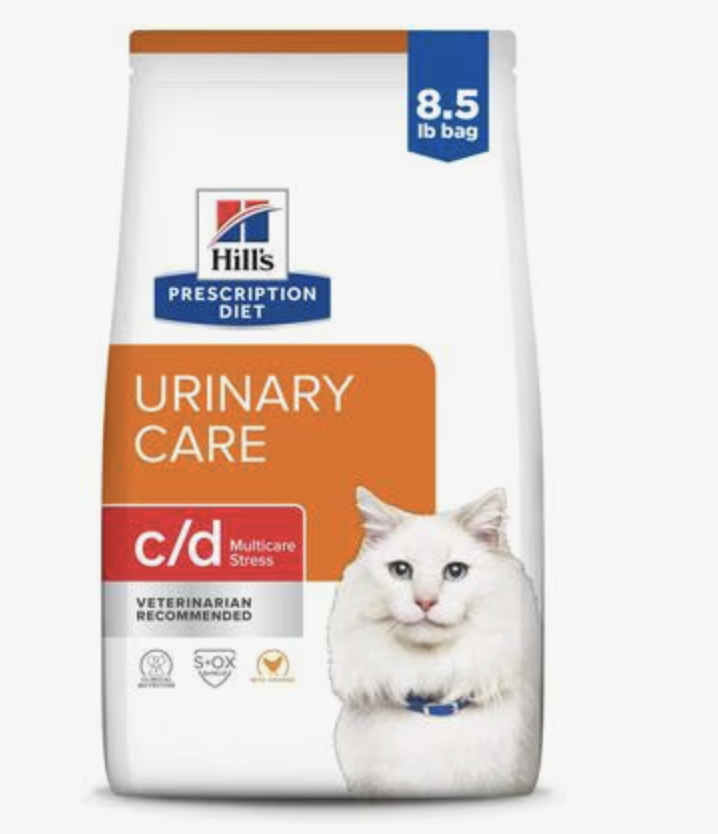
Buy at PetSmart
Key Urinary Health Features This veterinary diet requires a prescription and is clinically tested and formulated by Hill’s nutritionists and veterinarians to reduce recurrence of urinary signs by up to 89 percent. It is specifically designed to help dissolve struvite stones in as little as 7 days, though the average is 27 days. It may help promote a urinary environment in your cat’s bladder, reducing the risk of calcium oxalate or struvite crystals. The controlled levels of key minerals are ideal, too.
Pros Potassium citrate may help acidify urine and reduce crystal formation. Designed for lifelong feeding to cats suffering from urinary health concerns. Requires a veterinary prescription because it is a therapeutic strength diet. The 89 percent reduction in recurrence according to Hill’s is a strong point. Easy-to-serve kibble formula.
Cons Some pet parents may balk at the need for a prescription. A bit pricier due to its ingredients and veterinarian-recommended formula. It may not solve all urinary issues, including blockages and stone removal. Some cats may not find it palatable.
Why It Made the List This formula earns the Best Vet-Formulated or Premium Option designation for its combination of clinical research, veterinary endorsement, and proven results in managing urinary conditions. Further, Hill’s c/d Multicare represents the gold standard for cats with diagnosed or recurrent urinary issues, offering precise mineral control and urinary-specific ingredients backed by extensive clinical testing from a leading veterinary nutrition brand.
Best Budget-Friendly Option:
IAMS ProActive Health Urinary Tract Health Adult Dry Cat Food
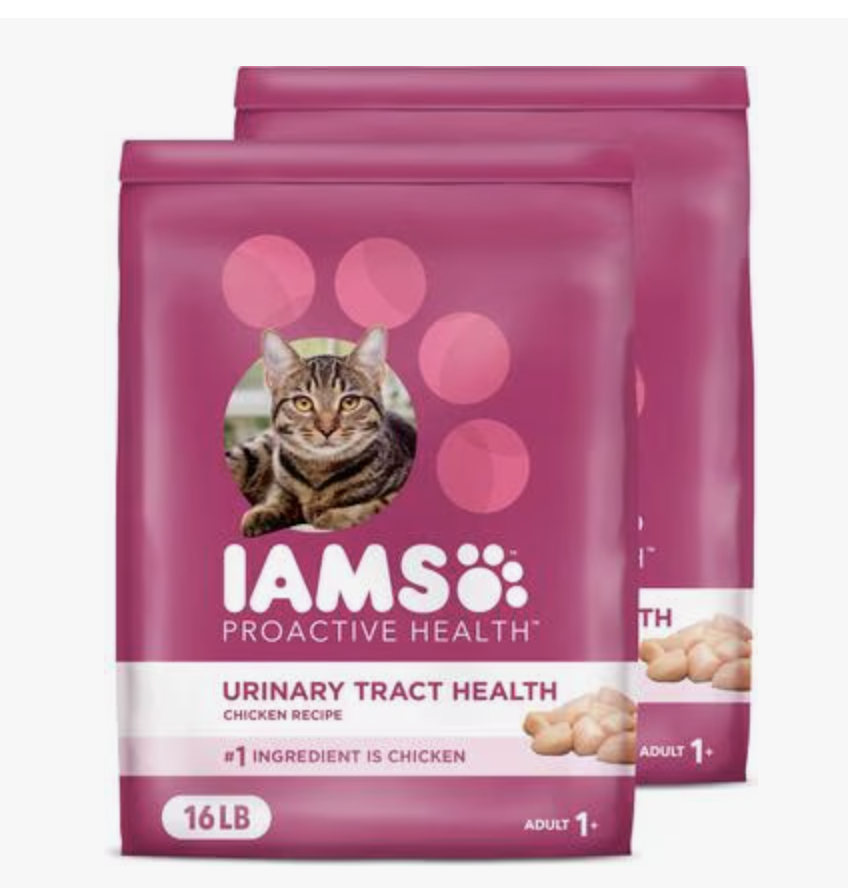
Buy at PetSmart
Key Urinary Health Features Formulated to reduce urinary pH and promote feline urinary tract health, the IAMS Proactive Health Urinary Tract Health chicken formula is well-priced. It features DL-methionine for urinary acidification support and has chicken as the first ingredient.
Pros Widely available at most retailers and online. High-quality chicken protein from a trusted brand. Convenient dry format makes feeding easier. More affordably priced than others. Contains essential ingredients like calcium and potassium.
Cons It has a lower moisture content than wet food, which isn’t ideal for cats who don’t drink much water. Contains grains such as corn and rice. Does not explicitly disclose the specific mineral levels in each bag.
Why It Made the List This IAMS formula earns its place as the Best Budget-Friendly Option because it makes urinary support achievable for cat parents. It bridges the gap between everyday kibble and costly prescription diets by providing meaningful urinary-tract nutrition and gentle pH balance without the hefty price tag or veterinary authorization.
How We Selected & Evaluated Foods
We used the following criteria when selecting and evaluating each cat food for urinary health on our list: - Mineral content and balance - Ingredient transparency and quality - Moisture content and hydration support - Veterinary involvement or nutritionist input - Real-world feedback and reviews from pet parents - Price point - Accessibility - Need for a prescription or not - Palatability, even for finicky cats
Buyer’s Guide: What to Look For in a Cat Food for Urinary Health
Before you start your cat on a new food, for urinary health or otherwise, it’s always a good idea to speak with your veterinarian or veterinary nutritionist. Here are some other key points to look for: - Low Magnesium Levels - Balanced Urinary pH - Ample Hydration Support - Seek High-Quality Animal Proteins - Smart Sodium & Filler Choices - Transparent Formulas & Reliable Brands - Taste & Feeding Compliance
Pro Tip:
If your cat eats when you are away, consider using an in-home camera to monitor the behavior and the amount eaten.
Consider Prescription Diet
For cats diagnosed with stones, blockages, chronic urinary issues, or recurring infections, non-prescription diets may not be enough. Veterinary-prescribed formulas provide the precise mineral and pH control needed for accurate therapeutic results.
Feeding Tips & Best Practices
Be aware of these time-tested tips and best practices when switching or feeding your cat a diet for urinary health: - Gradual Diet Transition - Encourage More Water Consumption - Monitor the Litter Box
Pro Tip:
Take photos or video of your cat’s litterbox to show your veterinarian.
Caution & When to Consult a Veterinarian
Never second-guess things if your cat seems off, and keep in mind that a diet is not a cure-all for cats with urinary issues. For example, some stones need surgery, infections require antibiotics, and blockages demand emergency treatment.
If your cat strains to urinate, produces little or no urine, cries or is very vocal in the litter box, urinates outside of it, or you see blood, contact your veterinarian immediately. Male cats are especially at risk of life-threatening blockages within 24 to 48 hours.
Final Thoughts On Cat Food For Urinary Health
The right food plays a vital role in your cat’s urinary wellness in helping balance pH, regulate minerals, and support hydration to keep the urinary tract functioning smoothly. It may also reduce the risk of crystals, prevent recurrences, and keep your cat comfortable long term.
However, the best urinary health diet is the one your cat will actually eat every day. Consider their taste preferences, texture likes, health status, and your budget. Cats with a history of urinary issues have different needs than those without, so match the food to your cat’s individual situation. No two cats are alike.
Before switching diets, especially for cats with past or current urinary problems, consult your veterinarian. They can help identify the cause, recommend the right formula, and ensure the diet truly supports your cat’s health and comfort. Here’s to happy, healthy cats everywhere.


